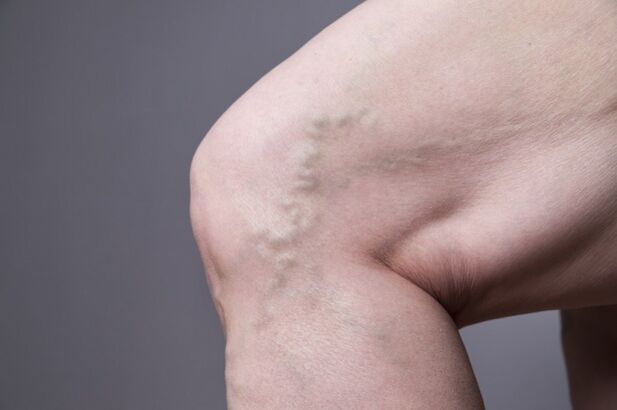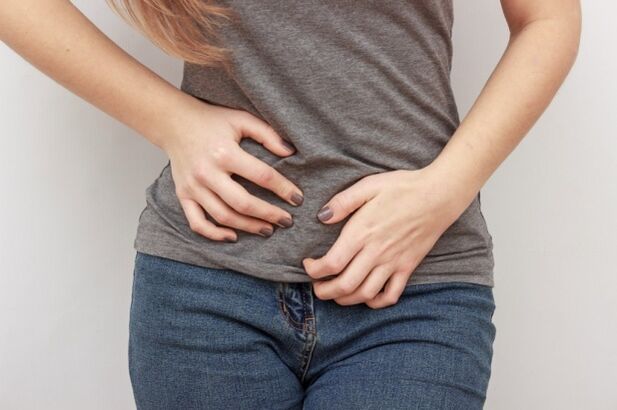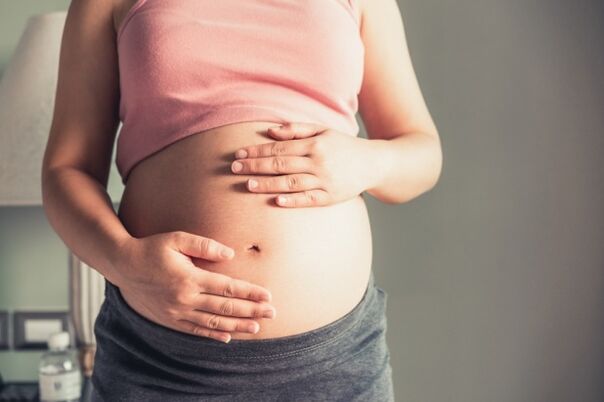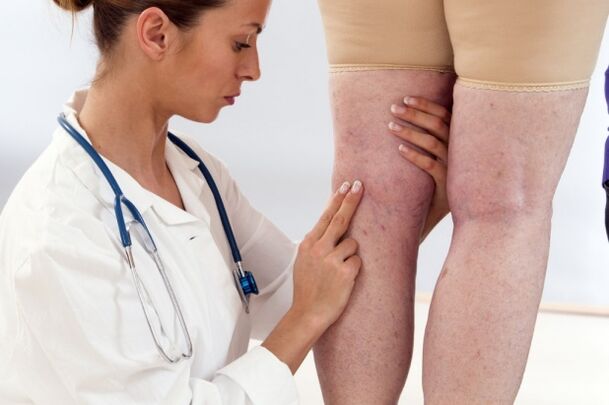Chronic venous insufficiency and varicose veins are widespread diseases: according to statistics, each third person faces developed countries.The special risk group includes fair sex representatives, to whom this pathology provides physical and psychological discomfort.In this article, we will consider why in women, the Jasku is dried, as their signs and symptoms, what to do for the treatment and prevention of this disease.
Varicose veins: Causes of varicose veins in women
According to statistics, men are less likely to suffer from varicose veins than women whose vessel scores occur 1.5 times more often.What caused a gender feature for this pathology?

- Characteristics of the hormonal background.During the monthly cycle, the hormonal background woman is subject to fluctuations, and during pregnancy, childbirth, breastfeeding and menopause, these changes become even more significant.The ratio of female sex hormones (estrogen and progesterone) has a direct impact on the state of vascular walls and blood viscosity.
- Hormone therapy.Combined oral contraceptives receive hormone therapy and taking a hormone background, provoking a change in estrogen ratio and progesterone in the body.
- Wearing shoes in heels and narrow pants.Unknown shoes, tight underwear and jeans - all this causes blood flow violation in lower extremities and pelvis, leading to varicose vein development.
In addition to these, exclusively female, the prerequisites for the development of pathology, varicose veins in women can cause the following factors:
- Genetically determined predisposition.According to statistics, varicose vein tendency was observed in 60% of cases if one of the parents suffers from this pathology.
- Significant surplus weight.Obesity is one of the factors in the appearance of varicose veins, because the lower limbs experience increased pressure.
- Excessive load on your feet.If you are professionally engaged in starting, jumping or including, useful conditions are created for the development of vein problems.
- Blood circulation disorder caused by a fixed PM.If you spend most days sitting or stood, this is a serious prerequisite for the development of venous diseases.
- Unstable nutrition.Diet, poor fibers, vitamins and trace elements, leads to disorders that affect the walls of blood vessels and blood composition.In addition, the unbalanced diet may cause prison, which are also able to lead to changes in veins - especially, on varicose veins of the pelvis.
- Diseases of endocrine and cardiovascular systems.Endocrine disorders cause changes in the hormone background, which in turn become prerequisites for developing varicose veins.Cardiovascular pathologies (especially hypertension) also provoke development of vein problems.

Varicose veins of pelvic veins in women
The pathological expansion of the pelvis boat is a common problem that faces 15-25% of reproductive women.This disease is often mistaken due to infectious and inflammatory processes that are localized in the reproductive bodies of the female genitourin system.In connection with the wrong diagnosis, it is prescribed inappropriate treatment, and the patient does not receive relief.Consequently, the problem of diagnosis and adequate therapies of varicose veins pelvic is an emergency problem of modern flexibility and gynecology.
The supply of blood in the pelvic authorities occurs due to venous uterus, as well as venous plexes-maginal, bubbles-vaginal, vaginal, review, plexus rectum, etc.The cause of the pelvic varicose vein in women violates blood flow in those vessels.It is usually caused by stagnation of a blood that can be due to the following rooms:
- Sitting lifestyle;
- previously transferred gynecological diseases;
- Breaches of hormonal background (especially - high level of estrogen);
- History of pregnancy and childbirth;
- Congenital and acquired bonding tissue violations (namely, a lack of collagen).
The opinion is the expert trait of this venous disease in women presence is a chronic syndrome pain pelvis.It is presented in pain in the lower abdomen, radiating into the pubic zone, Sacrum and groin.
The peak of pain usually falls to the other half of the menstrual cycle, complementing heavy premenstrual syndrome and disenery.Psychosomatic disorders can join the mentioned symptoms.

As mentioned above, the diagnosis of pathology is difficult in which the symptoms of this disease of veins in women can misinterpret as signs of purely gynecological problems.Therefore, the correct diagnosis, transvaginal ultrasound, diplerography, phlebography, in some cases, will be required, in some cases, diagnostic laparoscopy, it will be needed.
A conservative and operating approach is used to treat varicose veins.
In the first case, the purpose of therapy is to increase the tone of the venous walls, the normalization of the nature of blood flow and blood viscosity.In order to solve these problems, patients are prescribed by Venotonics, they conduct hyrudotherapeutic sessions, ultrasound and magnetotherapy, as well as exercise exercises exercise.If the conservative therapy of this disease of the pelvis is inefficient, surgical intervention - sclerosis or vein embolis in pregnant women.
Problems with Vienna in pregnant women
Varicose veins is the problem of the most recent women.This is due to changes that occur in the body of the expected mother during gestation.During this period, there is a fully restructuring of the hormonal background, which is directly related to the condition of blood vessels.For example, estrogen growth leads to changes in the structure of the muscular layer of venous walls and spreading blood vessels.

In addition to hormonal changes accompanied by the period of gestation and birth of babies, pregnancy and childbirth are able to evoke the development of vein diseases in pregnant women and for other reasons.First of all, it is an increase in body weight and concurrent cargo growth on the lower limbs, as well as excessive tensions that a working working age woman during contractions.
During the pregnancy, an increase in the total volume of circular blood occurred due to the growth of plasma and red blood cells was observed.
Venus Diseases in Women: Symptoms and Signs
Depending on the development phase, varicose veins on their feet are manifested in different ways:
- The initial phase of the pathological process is simple not to notice, because its manifestations are usually minimal.Little vascular stars appear on their feet, there is a slight feeling of discomfort in the evening, by the end of the day it can be easy swelling.Even if the described clinical picture does not cause many anxiety as soon as you have named symptoms, it is recommended to advise with the doctor.
- If the disease was not detected in the initial phase, the treatment did not start in time, the problems with veins in women are worse.The venous network is becoming more pronounced, characteristic nodes and cables are clearly visible under the skin, swelling and a feeling of fullness in the lower extremities causes serious discomfort.
- If the disease is not treated or not treated ineffective, it becomes advanced.Poor veins are strongly pulled under the skin, there is constant swelling, in the night there is spasms, leather in the leg area can change color and become covered with a trophic ulcer.
Venous diseases in women: Treatment
There are two main approaches to solving this problem: conservative and surgical.The first of them is usually used in the initial phases of pathology development, while others are justified to combat the later stages of the disease.

Conservative therapy involves taking medicines, using thematic products, attendance of physical session therapy, carrying compression socks, customizing physical activity, daily routine, diet and drinking mode.In addition, you can use additional products to combat varicose veins - for example, normaven® leg cream.Its regular use of lower extremities helps to solve swelling, fatigue, weight and discomfort in legs, disappearing night cramps and reduce the severity of vascular samples.
Thanks to its natural composition, the cream can also be used during pregnancy.
Surgery focused on a complete or partial removal of varicose veins.Modern vascular operation can offer the following types of operations:
- Combined phlebectomy.
- Laser coagulation.
- Radio frequency coagulation.
- Sclerosis.
When it comes to treatment of venous diseases in women for 50-60 years, and in older patients, surgical intervention is usually not done because it is stressful for the body.























